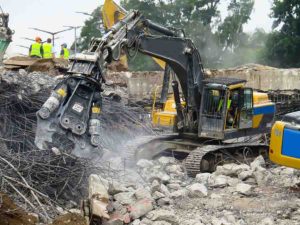
Up to now, there was no way of predicting whether a powerful earthquake was likely to be followed by one of even greater magnitude. But the results of a study recently published in Nature by Laura Gulia and Stefan Wiemer from the Swiss Seismological Service (SED) at ETH Zurich awaken hopes that we will soon be able to do just that, in real time.
Such a scientific discovery would have far-reaching consequences for civil protection, enabling more reliable decisions about evacuating people, allowing rescue workers to target their efforts accordingly, and permitting the implementation of measures to secure critical infrastructure, such as power stations.
Whereas most major earthquakes are not preceded by foreshocks, they are always followed by thousands of aftershocks, whose frequency and magnitude fade over time. However, in some cases, a major earthquake is followed by an even more powerful one. This was what happened in the sequences of earthquakes that hit Central Italy in 2016 or Ridgecrest, California (U.S.) in July 2019.
Based on recent seismic data, the authors of the study have devised a method that can be used to determine whether a sequence of earthquakes is ending or will be followed by an even more powerful earthquake. The relevant parameter they examined was the so-called b-value, which characterises the relationship between the magnitude and number of quakes. Laboratory measurements show that this value indirectly indicates the state of stress in the Earth’s crust. In seismically active regions, the b-value is usually close to one, meaning that there are about 10 times as many magnitude three earthquakes than quakes with a magnitude of four or higher.
A traffic light system
The researchers have now demonstrated that the b-value changes systematically in the course of an earthquake sequence. To prove this, they examined data from 58 sequences and came up with a traffic-light system indicating what would happen next. When the b-value drops by 10 percent or more, the traffic light turns red, suggesting acute danger of an even more powerful quake. In most cases, though, the b-value rises by 10 percent or more and the traffic light turns green, giving the all-clear by predicting a typical sequence that will gradually fade away. This happened in 80 percent of the sequences captured in datasets examined by the researchers. The traffic light shows amber when the b-value rises or falls by less than 10 percent, meaning it is unclear what will happen next.
The traffic-light system devised by the researchers turned out to be accurate in 95 percent of the cases they examined. The observed change in the b-value revealed how a sequence would develop, indicating whether or not an even more powerful earthquake would follow. That said, their findings will have to be verified by examining other datasets before such a system can actually be used for civil protection. The system’s successful deployment would also require a dense seismic network and corresponding data processing capacity. By no means all regions that could benefit from such a traffic-light system currently have such resources.
Reference:
Laura Gulia et al. Real-time discrimination of earthquake foreshocks and aftershocks, Nature (2019). DOI: 10.1038/s41586-019-1606-4
Note: The above post is reprinted from materials provided by ETH Zurich.










